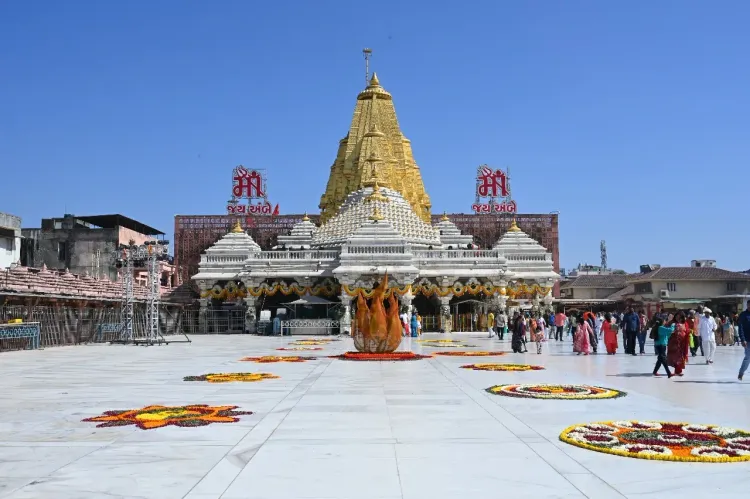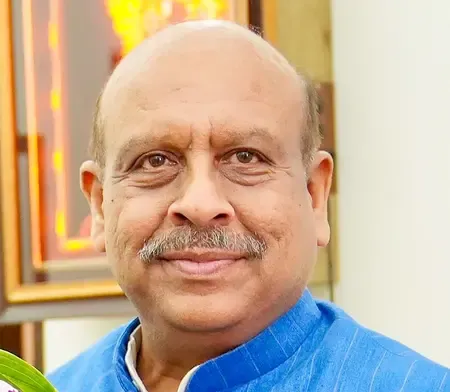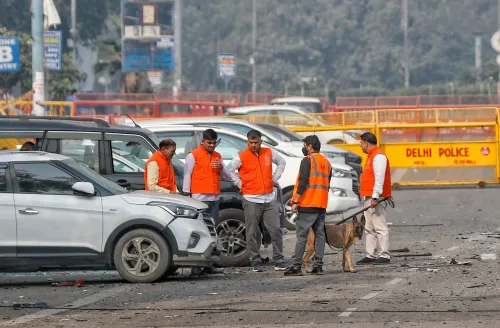Has Ambaji Temple in Gujarat Earned FSSAI’s ‘Eat Right Prasad’ Certification for Hygiene and Quality Standards?

Synopsis
Key Takeaways
- Ambaji Temple has received ‘Eat Right Prasad’ certification from FSSAI.
- Certification reflects the temple's commitment to hygiene and food safety.
- Annually, approximately 1.25 crore units of Mohanthal are sold.
- Led by Additional Collector Kaushik Modi, the temple maintains high standards.
- Ambaji Temple is a significant Shakti Peetha in India.
Ahmedabad, July 23 (NationPress) The esteemed Ambaji Temple in Gujarat, a significant site for Shakti devotees worldwide, has received the ‘Eat Right Prasad’ certification from the Food Safety and Standards Authority of India (FSSAI). This accolade confirms the temple's commitment to safety, hygiene, and systematic food management in the preparation and distribution of its sacred offerings.
Situated in the Banaskantha district of Gujarat, the temple is renowned for its beloved Mohanthal prasad, which is prepared and distributed by the Shree Arasuri Ambaji Mata Devasthan Trust.
Annually, the temple sells around 1.25 crore units of Mohanthal, a traditional sweet offered to worshippers. The FSSAI certification was awarded following a meticulous review of cleanliness, food safety protocols, and quality standards throughout the preparation and distribution procedures.
Only religious institutions that rigorously meet these criteria qualify for the ‘Eat Right Prasad’ recognition. This certification represents a significant achievement under the leadership of Additional Collector Kaushik Modi, who also acts as the temple administrator.
In an official statement, Modi highlighted that the temple trust is dedicated to upholding the highest standards of hygiene and service for its devotees.
The Ambaji Temple is one of the most venerated Shakti Peethas in India and holds tremendous spiritual importance for Hindu devotees.
Dedicated to Arasuri Amba, a manifestation of Goddess Durga, the temple is believed to be the location where the heart of Goddess Sati fell when Lord Shiva transported her burned body across the universe.
The temple's history spans thousands of years, referenced in ancient texts and scriptures, with devotees visiting year-round, especially during the Bhadrapad Purnima fair.
The current structure has been renovated over the centuries while preserving its spiritual essence and significance within India’s cultural and religious heritage.










